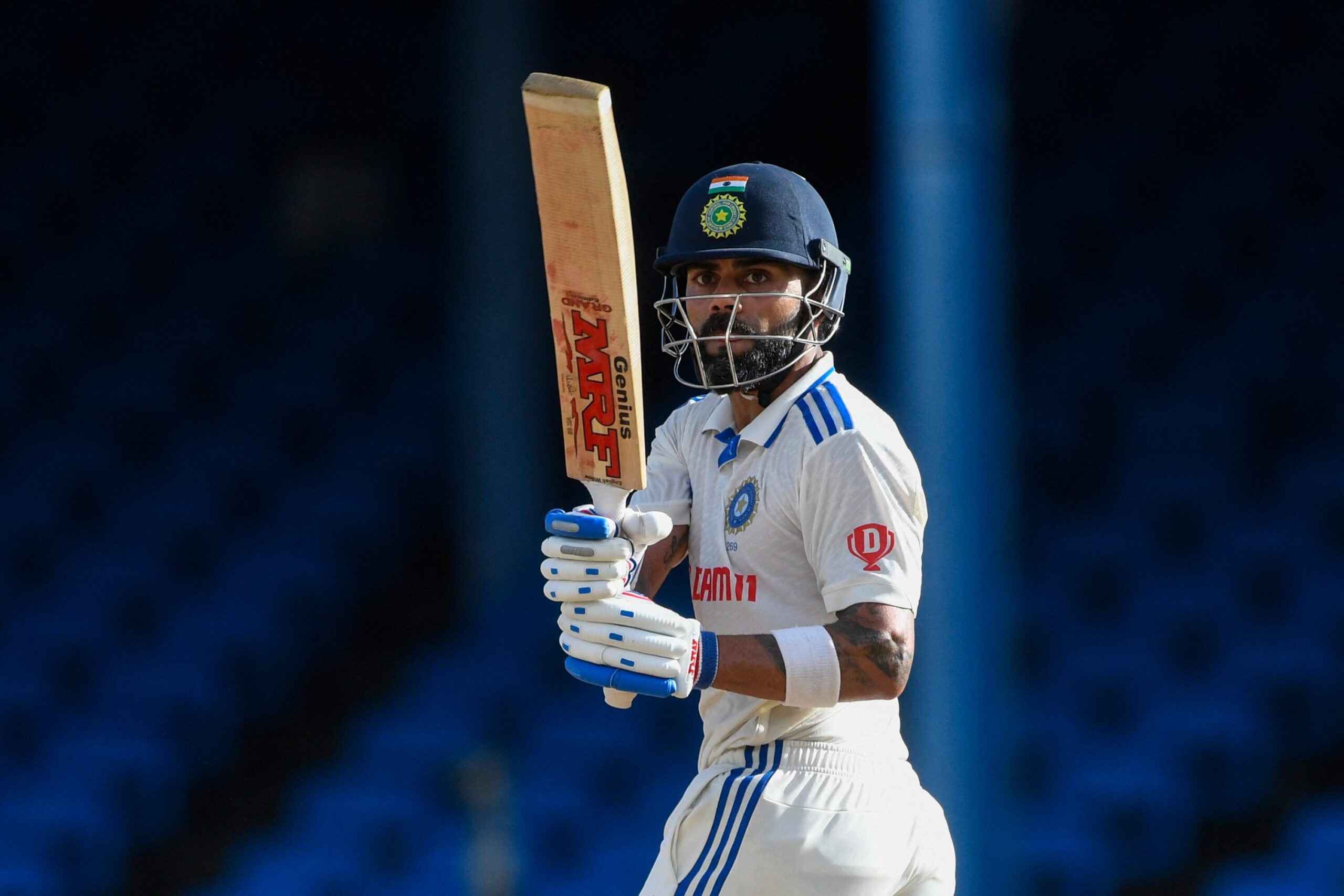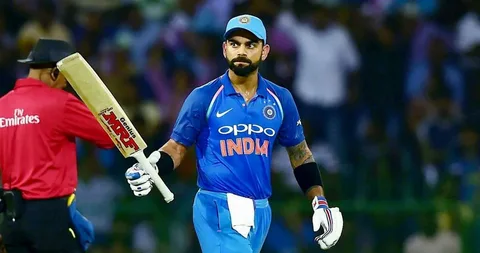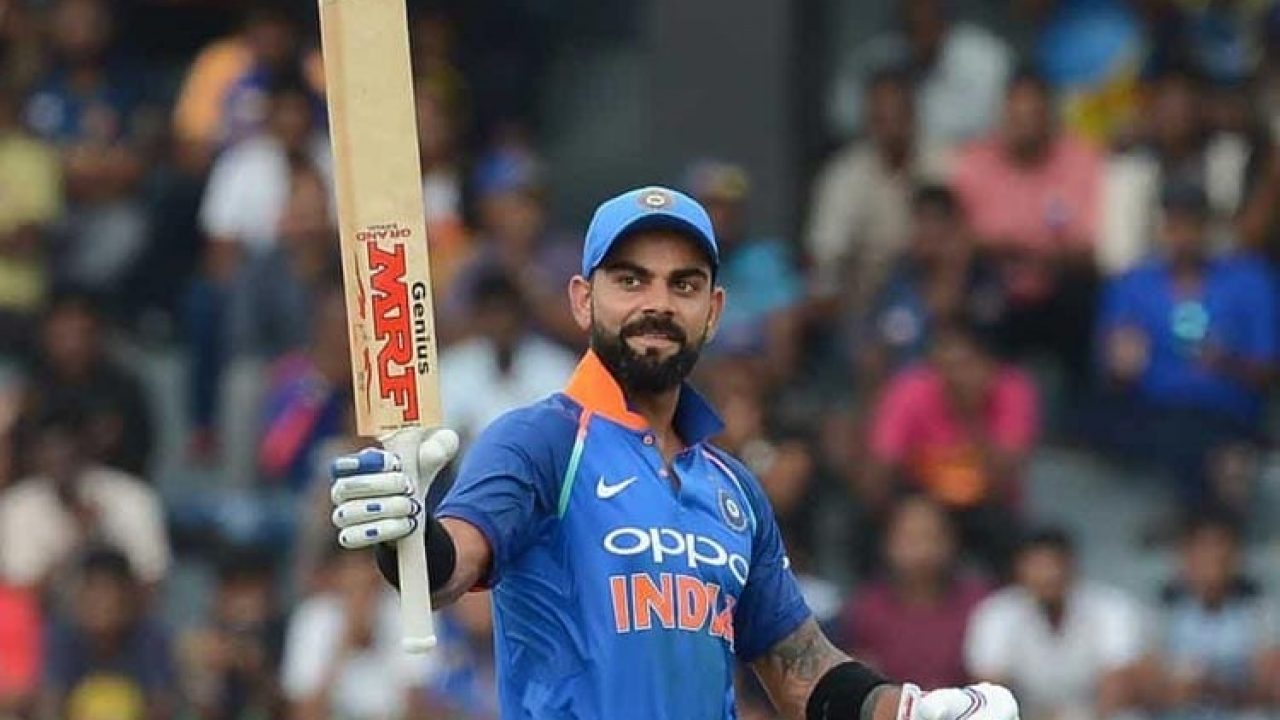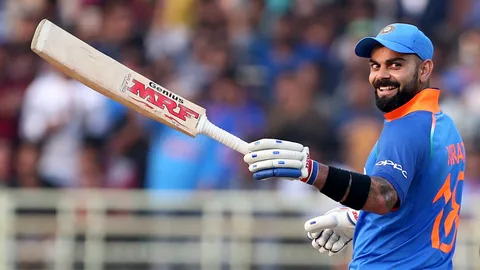Virat Kohli Batting Technique in Different Formats
Virat Kohli is the fittest batsman in world cricket and runs extremely well between the wickets. He also understands that the basics of long innings are strike rotation and minimizing dot balls.
Kohli presents the ball with a straight bat and is adept at picking up variations in line and length. His batting technique allows him to play all three formats without ever compromising on his consistency.
Test Cricket
In test cricket, Kohli’s ability to build innings with patience and precision sets him apart as a true legend of the game. This batting style, coupled with his astute understanding of the bowler’s mindset, is what makes him so formidable in such high-pressure situations. Using his exceptional footwork to create space, Kohli is able to find the gaps in the field and convert them into fours or sixes with ease.
Kohli’s batting style is not only unique, but it also works well against pace and spin alike. His deft footwork allows him to get into position early and create space with ease. This, in turn, helps him to play a wide variety of shots, including flicks, drives, and straight-batted strokes. In addition to this, Kohli’s supple wrists allow him to rotate the strike and pick up singles at will.

When it comes to playing against fast bowlers, Kohli is a master at reading the delivery, both in terms of line and length. By analyzing the bowler’s intent, Kohli can plan his shot selection in advance and anticipate what is coming his way. This is what makes him so dangerous, especially when he’s on song.
While most batsmen settle into a consistent batting technique once they reach first-class level, Kohli has always been willing to make changes to his game. This has been especially evident when it comes to his approach to swing bowling. After being advised by Tendulkar to change his stance to be more closed off, Kohli did so with great effect.
The result has been a marked improvement in Kohli’s performance against swing, particularly on the off side. As the pie chart above shows, he went from scoring just 45% of his runs in test cricket on the off side before this strategy was implemented to a staggering 56%.
Moreover, Kohli has also worked hard to perfect his cover drive against seam bowling. This has allowed him to dominate against pace bowlers, even in conditions that offer swing such as England and New Zealand. The results speak for themselves, as Kohli has averaged over 70 in Test cricket every year since this adjustment was made.
ODIs
A lot of Kohli’s success in the ODI format is owed to his ability to control the game from the back foot. This is something that comes naturally to him, given his impeccable balance and outstanding footwork. The captain is also great at anticipating the bowler’s pitch and length, allowing him to play his natural strokes with ease.
He does this by playing the ball late, minimizing the margin for error and increasing his chances of success. This is particularly evident against fast bowlers, as the captain specializes in playing horizontal bat shots off quick pitches. Kohli’s excellent timing and placement often leaves the fielders frustrated as the ball races to the boundary.

Kohli’s unique technique has also allowed him to excel against spinners. He has a great understanding of how to play spin, which is essential for scoring big runs in the shortest format of the game. He is also adept at utilizing his feet to minimize the amount of spin that the bowlers can get on the ball, which gives him an extra edge in terms of his power and control.
Although Kohli has a tremendous all-round game, there are certain bowlers who consistently trouble him in ODIs. For example, Josh Hazlewood is Kohli’s arch nemesis in the shorter formats as the Australian pacer has dismissed him four times in six innings. Ravi Rampaul and Moen Ali are two more bowlers who have troubled the Indian captain.
In order to minimize his chances of getting out, Kohli works hard on his footwork and running between the wickets. This has helped him to score a lot of fours and sixes in the ODI format.
This has been reflected in the pie chart below, which illustrates how Kohli scores his runs. It shows that 40% of his runs come from ones, while an impressive 16% is accounted for by twos and threes. This further reinforces the fact that Kohli is an outstanding run scorer who is well-versed in all aspects of batting.
T20s
In an era where power batting is often prioritized over technique, Kohli stands as a throwback to a more classical art of batting. He balances aggression with beauty, delivering elegant on-drives and charming square cuts that dazzle the crowds. But, behind the aesthetics lies impeccable timing and placement that allows him to generate remarkable power.
Kohli’s timing stems from his impeccable footwork, with his feet fluidly moving across the crease to quickly position himself to play different types of deliveries. His stance is also slightly open, allowing him to pick up the spin with greater ease and precision.

As a result, Kohli is exceptionally well equipped to handle spin bowling. Whether it is a short back lift or a fuller delivery, he uses his feet to get the bat up early, and then utilizes his strong wrists to flick the ball into the gaps. The combination of his wrists and bat-speed can leave attacks frustrated, as he creates extraordinary angles that defeat field placements.
He is equally adept against short pitches, as he can use his quick feet to move forward and play a pull shot with panache. The only area where Kohli’s technique may be vulnerable to attack is against fast bowlers who are able to generate pace with short backlifts, or who can lift the ball over mid-wicket.
This is where Kohli’s footwork, balance, and hand-eye coordination become crucial. He can shift his stance on a whim, standing outside the crease against seam bowlers and deep inside against spinners. This flexibility, combined with his superb wrist work, allows him to effortlessly score runs off both sides of the pitch.
Kohli can also switch between a conventional batting stance and an extra-wide stance on the leg side, depending on the type of pitch. He can even twirl the bat if the surface is suitable for it. This flexibility makes him a potent threat against all kinds of attacks.
The Breakdown of Virat Kohli’s Runs
Kohli’s impeccable footwork and balance are the cornerstones of his batting technique. He has mastered the art of rotating the strike with ease and is adept at both front foot and back foot play. The Indian captain also has a very strong defensive game, which makes him a difficult batsman to dismiss.
This chart illustrates how Kohli scores his runs and what types of deliveries he tends to miss. The majority of his runs are scored through fours and sixes, highlighting his ability to score quick boundary shots. He also has a good dot ball percentage, which is a result of his solid footwork and excellent running between the wickets.

When it comes to facing pace bowlers, Kohli is very adept at gauging the pitch of the ball and using his feet to position himself for a positive shot. He is also very comfortable playing off spinners and can vary the pace of his strokes depending on the conditions.
Kohli is also a very strong player when it comes to scoring against short-pitched balls, such as yorkers. He is able to transfer weight onto his back leg and pull the ball with power. This is an important skill to master as it can help batsmen get ahead of the bowler and maximize their run-scoring opportunities.
Another aspect of Kohli’s batting style that sets him apart from his peers is his mental fortitude. He is able to maintain a high level of concentration throughout long innings and grueling matches, which is crucial for a batsman. He has also shown incredible resilience when batting in tough situations, such as when India were trailing in the fourth innings of a Test match at Edgbaston in 2018.
Lastly, Kohli’s excellent fitness is a key factor in his success as a batsman. He regularly trains hard and eats well, which helps him maintain peak performance over long innings and grueling matches. He is also a great advocate of the ‘mind over matter’ approach, which has helped him overcome obstacles and achieve success. He has set a new standard for batsmen in the modern game and is a true inspiration for his teammates and fans.










